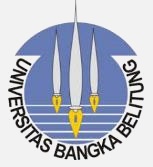THE ROLE OF THE COMMUNITY IN THE FRAMEWORK OF PREVENTION AND ERADICATION OF CORRUPTION IN THE PERSPECTIVE OF LAWS IN INDONESIA
Abstract
Law Enforcement Problems including corruption, both prevention and eradication of corruption are not only the duty of law enforcers, but the duties of all parties including the public, community participation in the prevention and eradication of corruption have been regulated in many laws and regulations in Indonesia, this matter is interesting in detail, whether the regulation of community participation is still not appropriate so that the public does not know it or still needs a deeper analysis of the provisions of the articles on community participation so that the community is more optimal in playing an active role in efforts to prevent and eradicate corruption. Based on the explanation, the problem in this research is: How are the Settings and Forms of Community Participation in the Prevention and Eradication of Corruption in the Perspective of Laws in Indonesia? To answer this problem, the type of research used in this study is the type of normative legal research that is a type of research that examines matters that are theoretical, principles, conceptions, legal doctrines and legal norms relating to community participation in the framework of prevention and combating corruption in the perspective of legislation in Indonesia. While the legal materials used are primary, secondary and tertiary legal materials. The results of this study will analyze legally the rules and forms of community participation in the prevention and eradication of criminal acts of corruption in various laws and regulations in Indonesia. There are several regulations that still need to be improved in the formulation of norms so that they can be more understood and understood by the public. Recommendations from this research are the arrangement and forms of community participation in the prevention and eradication of criminal acts of corruption in various laws and regulations in Indonesia must have a good norm formulation and need to be socialized to the public so that people know and participate, so the formulation of norms in the legislation is not only contained in legislation but can be applied by the community in the context of preventing and eradicating criminal acts of corruption in the perspective of legislation in Indonesia.
Downloads
References
Adami Chazawi, 2005, Hukum Pidana Materiil dan Formil Korupsi di Indonesia, Malang, Bayumedia Publishing.
Evi Hartati, 2006, Tindak Pidana Korupsi,Jakarta, Sinar Grafika.
H. Elwi Danil, 2014, Korupsi Konsep Tindak Pidana dan Pemberantasannya, Jakarta, RajaGrafindo Persada.
Hassan Suryono, 2013, Pendidikan Integritas Anti Korupsi Dalam PerspektifPendidikanSosial dan Hukum, Surakarta, UPT UNS Press.
Leden Marpaung, 2007, Tindak Pidana Korupsi Pemberantasan dan Pencegahan, Jakarta, Djambatan.
Lilik Mulyadi, 2007, Tindak Pidana Korupsi Di Indonesia Norma Teoretis Praktek dan Masalahnya, Bandung, Alumni.
Tim Pustaka Merah Putih, 2007, Undang-Undang Pemberantasan Tindak PidanaKorupsi DisertaiPasal-Pasal Penjelasan, Yogyakarta, Pustaka Merah Putih.
Undang-Undang No. 31 Tahun 1999 Tentang Pemberantasan Tindak Pidana Korupsi.
Undang-Undang No.20 Tahun 2001 Tentang Perubahan Undang-Undang No. 31 Tahun 1999.
Peraturan Pemerintah No. 43 Tahun 2018 Tentang Tata Cara Pelaksanaan Tata Peran Serta Masyarakat dan Pemberian Penghargaan Dalam Pencegahan dan Pemberantasan Tindak Pidana Korupsi.
Peraturan Presiden No. 54 Tahun 2018 Tentang Strategi Nasional Pencegahan Korupsi.
Copyright (c) 2019 Owned by the Author(s), published by Berumpun: International Journal of Social, Politics and Humanities

This work is licensed under a Creative Commons Attribution 4.0 International License.










